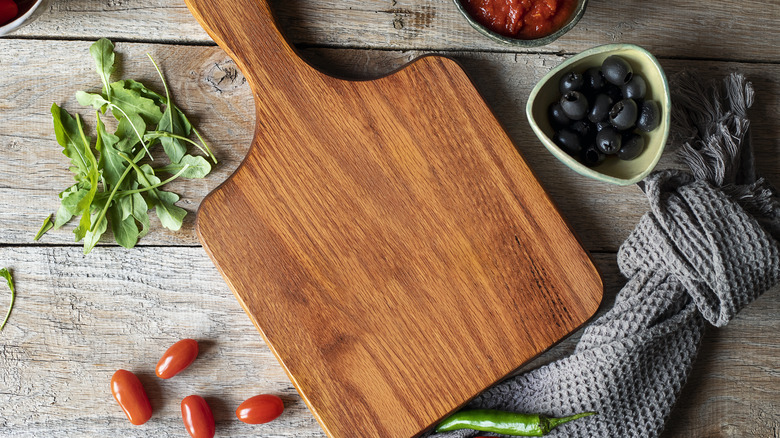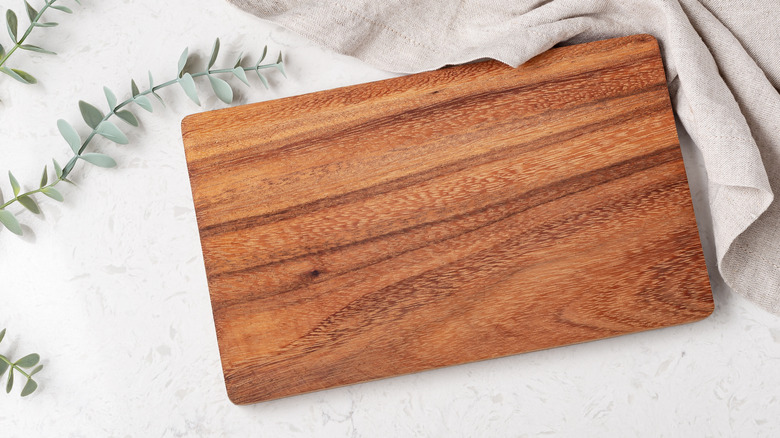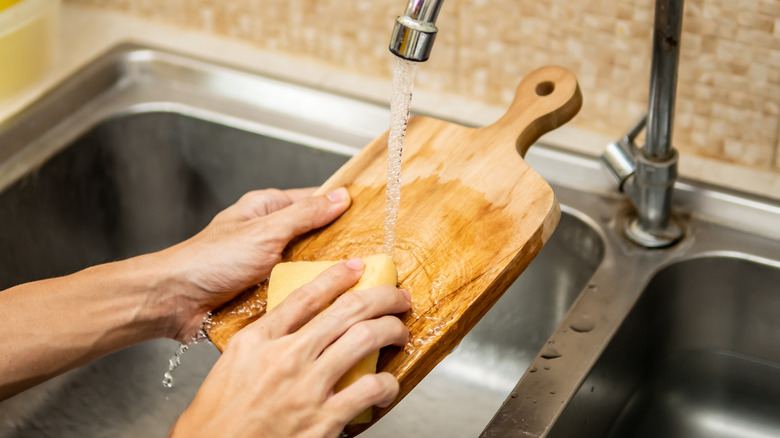Why You Should Clean Wood Cutting Boards On Both Sides
Between providing a stable cutting surface and saving your counters from scratches, wooden cutting boards are the unassuming yet crucial backbone of countless kitchens. Along with their naturally appealing aesthetic, wooden cutting boards are also incredibly durable. Despite their durability, these kitchen tools are also easy on knife blades, and won't dull them as fast as cutting boards made of other materials. Whether you're chopping up scores of fruits and veggies or carving up a hunk of steak, a good wooden cutting board can last you for years, but only if you take care to keep both sides in tip-top shape.
Regular maintenance of wooden cutting boards, which includes cleaning and oiling them, can help to preserve their longevity. Additionally, a clean cutting board is crucial to prevent cross-contamination between raw ingredients and ensure food safety. This is why it's important to learn how to clean your wooden cutting board properly. This includes giving both the front and back a thorough scrub to help preserve the integrity of the wood and to make sure it is completely sanitized.
Cleaning both sides prevents damage and contamination
The downside to wooden cutting boards is that they take a bit more elbow grease to keep clean compared to their plastic counterparts. Because the wood can become warped and uneven (which can render the board impossible to cut on), you should never put the cutting board into the dishwasher or submerge it in water in any way. While it may seem counterintuitive, this is also why you should take care to wash both sides of the board. Doing so will ensure that the entire thing dries at the same rate, which should minimize warping. Otherwise, one side of the board may become damaged after repeated washing.
You should also clean both sides of a cutting board simply to make sure you remove all surface grime and bacteria. If you use your cutting board to cut raw meat, there's a chance that some of the juices could have run and contaminated the other side. It's also possible that you touched the other side of the board or the handle with meat-covered hands, which can also lead to cross-contamination. For general cleanliness and food safety, it's wise to wash all parts of a cutting board, even if you only use one side.
How to clean your wooden cutting board
When you're ready to clean your cutting board, start by scraping off any large chunks of food into the trash can, then give it a quick shower with warm water in the sink. Then, scrub the entirety of the board with dish soap and a sponge or brush. Don't use steel wool or anything too rough, or you might scratch the cutting board. After rinsing off the board, dry it off using a clean rag or paper towel, then let it sit out so it can finish drying completely.
A wooden cutting board should be washed every time you use it, and to keep it as clean as possible, you should sanitize it about once a week. There are quite a few ways to sanitize your cutting board using hydrogen peroxide, bleach, or vinegar, but the best way to eliminate germs is probably to coat the board with baking soda, and then scrubbing over it with a lemon half. Finally, to increase the durability of your wooden cutting board, cover it with a thin layer of mineral oil or beeswax once a month. This will keep the wood shiny and attractive, and help prevent deep-set stains.


